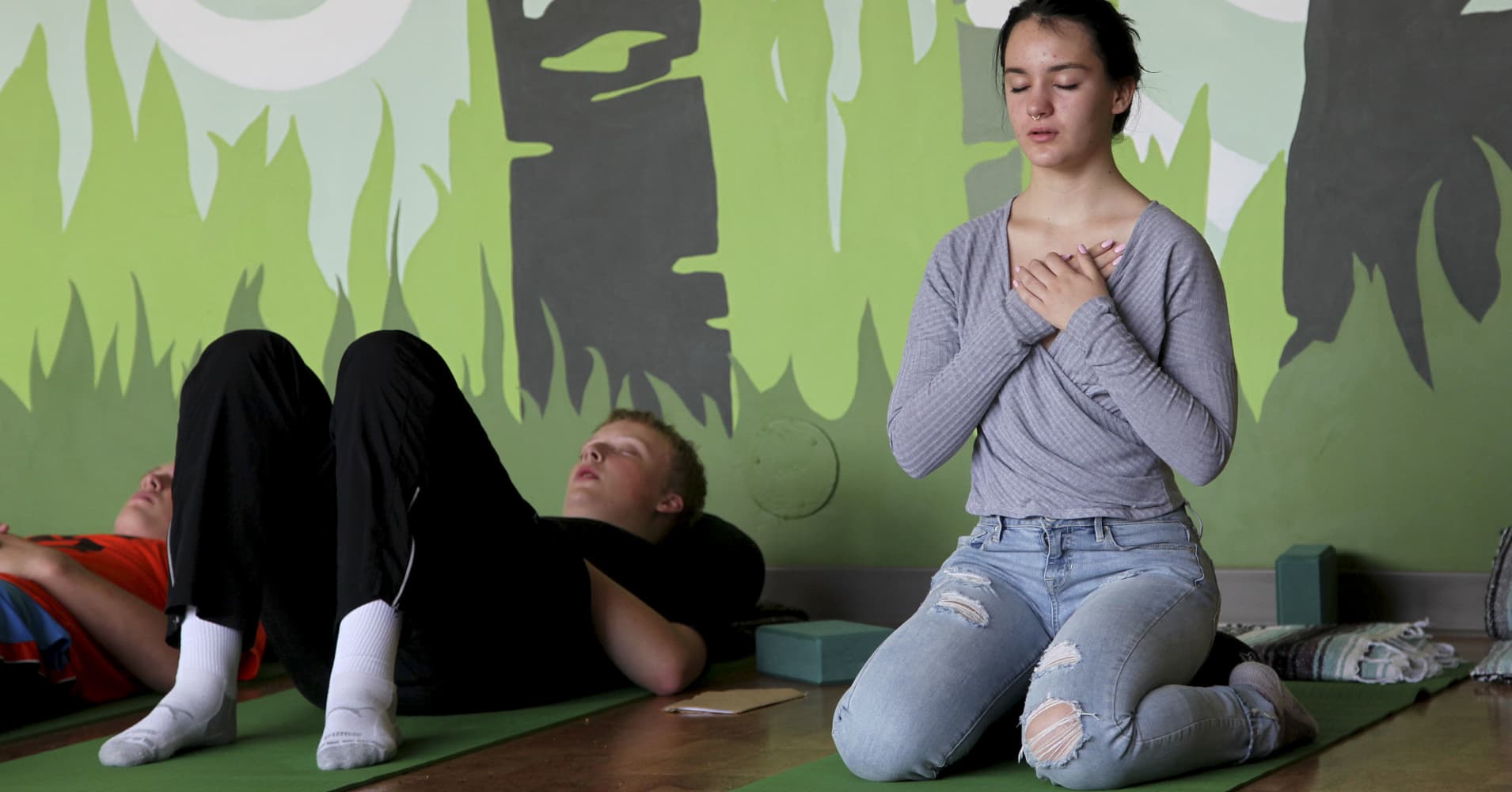
Brooke Waterman shuts the lights off in her classroom and the students settle in.
Some sit with their legs crisscrossed. Others lie down on the rug. They close their eyes, and she turns on a guided meditation through the Calm app. It's so quiet you can hear a pin drop. Her second graders are never more quiet and focused than when they're meditating, she says.
"It's amazing to see these kids really tune into themselves and ignore the outside world for a minute," said Waterman, a teacher at Springbrook Elementary School in Westerly Rhode Island.
Between homework, tests, problems at home and in their social lives, kids are under intense pressure. More than a quarter of teens report feeling extreme stress during the school year, according to a 2013 survey from the American Psychological Association. Nearly half said they weren't doing enough or weren't sure if they were doing enough to manage their stress.
Teachers around the country like Waterman are using popular apps Calm and Headspace to introduce meditation to their lesson plans to help curb anxiety and improve performance in the classroom.
The American Academy of Pediatrics encourages parents and teachers to teach kids meditation, saying it helps them function more effectively and clearly. A 2015 report by the National Institutes of Health found that teaching children mindful activities like yoga and meditation can improve their cognitive, social and emotional skills as well as their academic performance. One trial by the AAP found that teaching mindfulness in schools could even lower symptoms of post-traumatic stress disorder.
"I think a lot of education focuses on remembering facts or things that aren't necessarily dealing with your own life skills or tools to deal with emotions," said Calm co-founder Alex Tew. "So I think mindfulness is incredibly important for all ages, but if we can teach the kids to meditate, that's an amazing, actually world-changing opportunity."
Calm tweet
Calm launched Calm Schools in May of 2016, giving kindergarten through 12th grade teachers around the world free access to some of the app's meditation and mindfulness exercises. In just over two years, 54,000 teachers across 140 countries have signed up, with 41,000 from the U.S.
Competitor Headspace takes a slightly different approach. It works directly with 35 districts and around 300 schools in 15 states to offer their teachers access to the mindfulness app. One of those districts is Broward County. Headspace connected with the district earlier this year after a shooting at one of its schools, Marjory Stoneman Douglas High School.
Headspace also recently started working with the Puerto Rico Department of Education to help with stresses associated with Hurricane Maria, a deadly storm that continues to torment the island a year later. The start-up on Monday is unveiling a pricing plan on Monday for college students of $9.99 per year, a steep discount from the typical $95.88 per year.
Calm Classroom, a nonprofit not affiliated with the Calm app, trains educators to teach mindfulness in the classroom. It studied the impact of its program at Wendell Smith Elementary, a Chicago Public School that teaches preschool through eighth grade. Its research showed practicing mindfulness led to a 69 percent decrease in students disrupting classroom instruction, a 91 percent decrease in running or excessive noise in the hallways and a 72 percent decrease in fighting, bullying and disruptive behavior.
Meditating improves performance by increasing connectivity in the dorsolateral prefrontal cortex — a key area of the brain associated with executive control, according to a 2017 NIH study. That helps boost the mental processes that regulate attention, decision making, impulse inhibition, working memory, time management, critical reasoning and problem solving.
One 2017 NIH study found that meditation increases resting state functional connectivity between the dorsolateral prefrontal cortex -- a key region that is broadly implicated in regulating attention, decision making, short-term memory and cognitive control
For teachers who are new to meditation, apps are trying to fill the void.
Christina Machado, a teacher at Sally Ride Elementary School in Los Angeles, started using the app Calm's guided meditations to settle her students after lunch and recess four years ago.
At first, she couldn't get them to sit still for more than a minute, then it was three minutes, then five minutes.
Now, if she forgets about it after lunch or recess, students will remind her "it's time for Calm." Their favorite guided meditation is called the body scan, which focuses on relaxing different parts of the body.
"During lunch and recess, you see your friends and your energy is all over the place and you end up wasting 10 minutes to sit down and say, 'Let's start math,'" Machado said. "But if I spend three to five minutes on the body scan, it deregulates them almost immediately."
via IFTTT
No comments:
Post a Comment